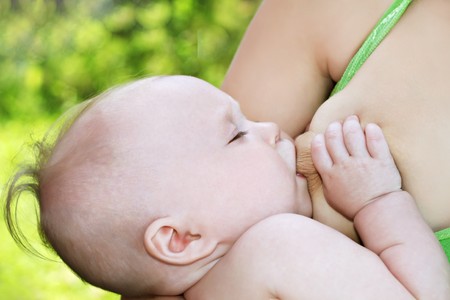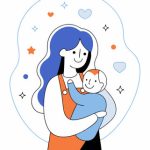1. Identify Common Allergens in Your Home
Creating an allergy-safe home starts with understanding what allergens might be present. Babies have sensitive immune systems, and exposure to common household allergens can trigger allergic reactions or respiratory issues. Here are some of the most common allergens found in homes and how they can affect your little one.
Common Household Allergens
| Allergen | Where It’s Found | Potential Effects on Baby |
|---|---|---|
| Dust Mites | Bedding, carpets, upholstered furniture, curtains | Can cause sneezing, runny nose, itchy eyes, and asthma symptoms |
| Pet Dander | Fur from cats, dogs, and other pets; found on furniture and clothes | May lead to skin irritation, congestion, wheezing, or rashes |
| Mold | Damp areas such as bathrooms, basements, kitchens | Can trigger coughing, congestion, itchy skin, and breathing difficulties |
| Pollen | Brought indoors from outside through windows, clothing, or shoes | May cause sneezing, watery eyes, congestion, and discomfort |
How These Allergens Affect Your Baby’s Health
Your baby’s immune system is still developing, making them more vulnerable to allergens. Exposure to dust mites or pet dander can lead to allergy symptoms such as a runny nose or itchy skin. Mold spores in the air may contribute to respiratory problems like wheezing or coughing. Pollen brought in from outside can also irritate your baby’s sinuses.
Signs That Your Baby May Have an Allergy
- Frequent sneezing or nasal congestion
- Red, itchy, or watery eyes
- Coughing or wheezing
- Skin rashes or eczema flare-ups
- Trouble sleeping due to discomfort or congestion
Next Steps: Reducing Allergen Exposure
Now that you know which allergens might be present in your home, the next step is finding ways to reduce exposure and create a safe environment for your baby. In the following sections, we’ll explore practical tips for minimizing allergens and keeping your home as allergy-friendly as possible.
2. Choose Hypoallergenic Baby Bedding and Furniture
Creating an allergy-safe home for your baby starts with selecting the right bedding and furniture. Many traditional materials can trap allergens like dust mites, pet dander, and mold, which may trigger allergic reactions. By choosing hypoallergenic options, you can help create a cleaner and safer environment for your little one.
What to Look for in Hypoallergenic Baby Bedding
When selecting crib mattresses, sheets, and blankets, opt for materials that are naturally resistant to allergens. Organic cotton, bamboo, and Tencel are excellent choices because they are breathable and less likely to harbor dust mites.
| Item | Recommended Hypoallergenic Materials | Why It’s Beneficial |
|---|---|---|
| Crib Mattress | Organic cotton, natural latex, wool | Resists dust mites and mold growth |
| Sheets & Blankets | Organic cotton, bamboo, Tencel | Soft, breathable, and chemical-free |
| Pillows (if used) | Hypoallergenic memory foam or organic cotton | Prevents allergen buildup |
Selecting Allergy-Friendly Furniture
The furniture in your babys nursery can also impact air quality. Traditional furniture may contain materials that release volatile organic compounds (VOCs), which can irritate sensitive airways. Opting for solid wood or low-VOC finishes can help reduce exposure to harmful chemicals.
Best Furniture Choices for an Allergy-Safe Nursery
- Crib: Choose a solid wood crib with non-toxic finishes.
- Dresser & Changing Table: Look for pieces made from untreated wood or certified low-VOC materials.
- Glider/Rocking Chair: Select one with a washable cover to easily remove allergens like dust and pet dander.
Washing and Maintenance Tips
No matter how hypoallergenic the materials are, regular cleaning is essential to keep allergens at bay. Here are some simple maintenance tips:
- Wash crib sheets and blankets weekly in hot water to kill dust mites.
- Vacuum upholstered furniture regularly using a HEPA filter vacuum.
- Avoid stuffed animals or choose machine-washable options that can be cleaned frequently.
- Use a mattress protector designed to block allergens from accumulating inside the mattress.
By carefully selecting hypoallergenic bedding and furniture, you can significantly reduce potential allergens in your babys environment. This small but crucial step will help ensure that your little one sleeps comfortably without unnecessary exposure to irritants.
![]()
3. Maintain a Clean and Allergen-Free Home
Keeping your home clean is one of the most effective ways to reduce allergens and create a safe environment for your baby. Regular cleaning routines, the right tools, and proper laundry habits can help minimize dust, pet dander, pollen, and other common allergens.
Implement Regular Cleaning Routines
A consistent cleaning schedule helps prevent allergens from accumulating in your home. Focus on areas where dust and dirt tend to build up, such as carpets, curtains, and upholstered furniture.
Simple Cleaning Tips:
- Dust surfaces with a damp cloth to prevent particles from becoming airborne.
- Mop floors regularly instead of sweeping to trap allergens effectively.
- Declutter spaces to reduce places where dust can settle.
Use a HEPA Vacuum
A vacuum with a HEPA (High-Efficiency Particulate Air) filter can significantly reduce allergens in your home. Standard vacuums may release tiny particles back into the air, but HEPA filters trap them more effectively.
Benefits of Using a HEPA Vacuum:
| Feature | Why It Helps |
|---|---|
| Captures small particles | Removes dust mites, pollen, and pet dander from carpets and upholstery. |
| Prevents allergen spread | Keeps allergens from being released back into the air while vacuuming. |
| Improves air quality | Makes the indoor environment safer for your baby. |
Wash Bedding Frequently
Your babys bedding can collect dust mites, pet hair, and other allergens. Washing sheets, blankets, and crib covers frequently helps keep their sleep space clean and safe.
Laundry Tips for an Allergy-Safe Home:
- Wash bedding in hot water (130°F or higher) to kill dust mites.
- Use fragrance-free detergent to avoid irritating sensitive skin.
- Launder stuffed animals and soft toys regularly or place them in the freezer overnight to kill allergens.
4. Be Mindful of Indoor Air Quality
Keeping the air in your home clean is essential for reducing allergens and creating a safe environment for your baby. Dust, pet dander, mold, and strong chemicals can all contribute to poor indoor air quality and trigger allergies. Here are some simple steps to improve the air your baby breathes.
Use Air Purifiers
Investing in a high-quality air purifier with a HEPA filter can help remove airborne allergens such as dust mites, pet hair, pollen, and mold spores. Place an air purifier in your babys nursery and other frequently used areas to keep the air as clean as possible.
Avoid Strong Chemical-Based Cleaners
Many household cleaning products contain harsh chemicals that can irritate your babys sensitive respiratory system. Opt for natural or fragrance-free cleaning solutions instead. Below is a comparison of common household cleaners and their baby-safe alternatives:
| Common Cleaner | Baby-Safe Alternative |
|---|---|
| Bleach-based disinfectant | White vinegar and water solution |
| Scented air fresheners | Baking soda or essential oil diffusers (baby-safe oils only) |
| Ammonia-based glass cleaner | Mild soap and water or vinegar spray |
Control Humidity Levels
Mold and dust mites thrive in humid environments, which can worsen allergy symptoms. Keep indoor humidity levels between 30-50% by using a dehumidifier if necessary. Proper ventilation in bathrooms and kitchens can also help prevent excess moisture buildup.
Create a Healthier Breathing Environment
A combination of clean air, gentle cleaning products, and proper humidity control will significantly reduce allergens in your home. By making these adjustments, you can provide a more comfortable and safer space for your baby to grow and breathe easily.
5. Introduce New Foods Carefully
Introducing solid foods to your baby is an exciting milestone, but it’s important to do it safely to reduce the risk of allergies. Some foods are more likely to cause allergic reactions, so following pediatric guidelines and observing your baby’s response is key.
Follow Pediatric Guidelines
Pediatricians recommend introducing allergenic foods early, usually around 4-6 months of age, unless your baby has a high risk of allergies. Common allergenic foods include peanuts, eggs, dairy, soy, wheat, fish, and shellfish. Introducing these foods one at a time allows you to monitor for any adverse reactions.
Monitor for Allergic Reactions
After introducing a new food, watch for signs of an allergic reaction, which may appear within minutes or hours. Symptoms can range from mild to severe and may include:
| Reaction Type | Common Symptoms |
|---|---|
| Mild Reactions | Rash, hives, mild swelling, upset stomach |
| Moderate Reactions | Vomiting, diarrhea, persistent crying or fussiness |
| Severe Reactions (Anaphylaxis) | Trouble breathing, swelling of face/lips/tongue, wheezing, severe vomiting |
Create a Safe Introduction Plan
- Introduce one new food at a time: Wait about 3-5 days before adding another new food.
- Start with small amounts: A tiny portion can help gauge your baby’s reaction.
- Avoid distractions: Serve new foods when your baby is alert and supervised.
- If there’s a family history of allergies: Consult your pediatrician before introducing allergenic foods.
- If a reaction occurs: Stop feeding the food and seek medical advice immediately if symptoms are severe.
The Importance of Early Exposure
Research suggests that early exposure to allergenic foods may help reduce the risk of developing allergies. As long as your baby does not have a known allergy or high risk factors, introducing small amounts of these foods under supervision can be beneficial.
Caring for a baby with potential food allergies requires patience and close monitoring. By carefully introducing new foods and watching for any signs of a reaction, you can create a safe and healthy eating environment for your little one.


